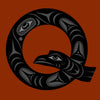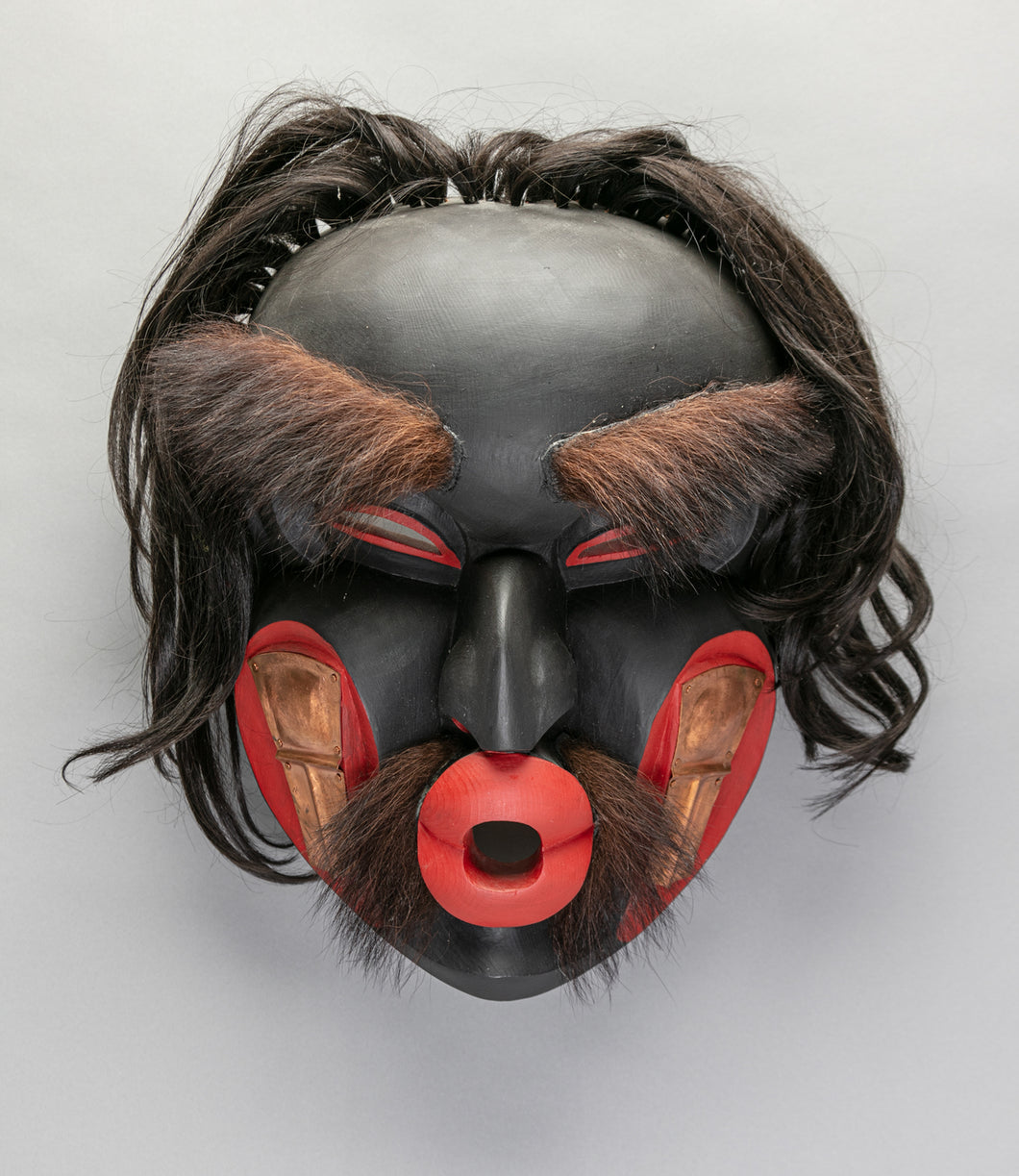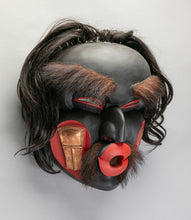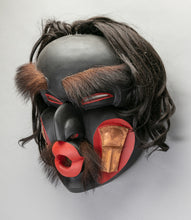Mask depicting Dzunukwa with Coppers, c. 1980 by Lelooska (1933 - 1996)
Regular price
$0.00
Sale
Mask depicting Dzunukwa with Coppers, c. 1980
Lelooska (1933-1996), Cherokee & Adopted Kwakwaka'wakw
red cedar, pigment, copper shields, bear fur, horse hair
14” high x 15” wide x 7” deep
Dzunukwa is the Kwakwaka'wakw name for the Wild Woman of the Woods. She is a giant, spiritually powerful spirit who can resurrect the dead and manifest lightning with her supernaturally loud voice. Dzunukwa guards and protects her children, who are all creatures and spirits of the forest. Human children who wander are likely to be captured by her and thrown into a basket on her back. She is almost always depicted with an accentuated mouth in an oval shape to represent her whispers in the wind that attract humans to the woods.
As well, Dzunukwa is considered a hierarchy figure, and if she comes to dance at your ceremony, it is a great honor. In this depiction, Dzunukwa has two "coppers" embedded in her cheeks. The copper, or tlakwa as it is called in the language of the Kwakwaka’wakw people, resembles a shield with a T-shaped ridge and symbolizes its owner’s wealth and high rank. Passing from owner to owner, the copper grows in value. This mask would have been owned by a high ranking member of society.
Master carver and storyteller Lelooska was born Don Smith in Sonora, California in 1933. He was called Yana the Bear at birth, but it was the name Lelooska, meaning "To Cut Against Wood With a Knife," that brought him fame. Lelooska and his family moved to Hubbard, Oregon in 1936, where they ran a gift shop, and where Lelooska began to carve under the tutelage of his grandfather He-Kill, Cherokee Nation from Oklahoma.
Though Lelooska was taught the traditional art and stories of the Cherokee, it was the carvings and myths of the Northwest Coast culture that inspired him to make carving a full time endeavor. He won acclaim for his totem poles, carved out of old-growth cedar. He is said to have carved 100 or more totem poles and thousands of masks, using only the D adze, the elbow adze and the hooked knives.
During Oregon's Centennial in 1959, Lelooska carved a 50-foot totem pole celebrating the state's role in Operation Deep Freeze, which established a scientific station at the geographic South Pole. The pole now towers over Washington Park Zoo in Portland. He carved a duplicate 30-foot Friendship pole, which dominates the entrance to the international airport at Christchurch, New Zealand.
In 1961, the family moved to Ariel. Volunteers helped build a traditional longhouse, a log museum, and later an art gallery. In 1968, Chief James Sewid, hereditary chief of the Kwakwaka’wakw Nation on Vancouver Island, held a potlatch to adopt Lelooska, his mother Shona-Hah, his sister Patty Fawn, and his brother Tsungani into the Sewid family.
Lelooska and his family offered traditional dance and storytelling performances, wearing the masks and robes of the Kwakwaka’wakw Nation of British Columbia. Lelooska, with his deep and commanding voice, brought to life the myths and legends of his ancestors.
The longhouse shows were among his proudest accomplishments, attracting 25,000 visitors a year. There were also workshops in American Indian culture offered by the nonprofit Lelooska Foundation, where students can earn college credits from Central Washington University and Lewis & Clark College.
Lelooska received an honorary doctorate from Lewis & Clark for his leadership in American Indian art and culture. He also was given the school's Aubrey Watzek Award for his contributions to American Indian culture. Lelooska has works in both Private and Public Collections including the National Museum of the American Indian, The Chicago Art Institute, The Portland Art Museum, and The Estate Collection of Arlene Schnitzer.
Lelooska passed away peacefully at home in Ariel, Washington in 1996.




